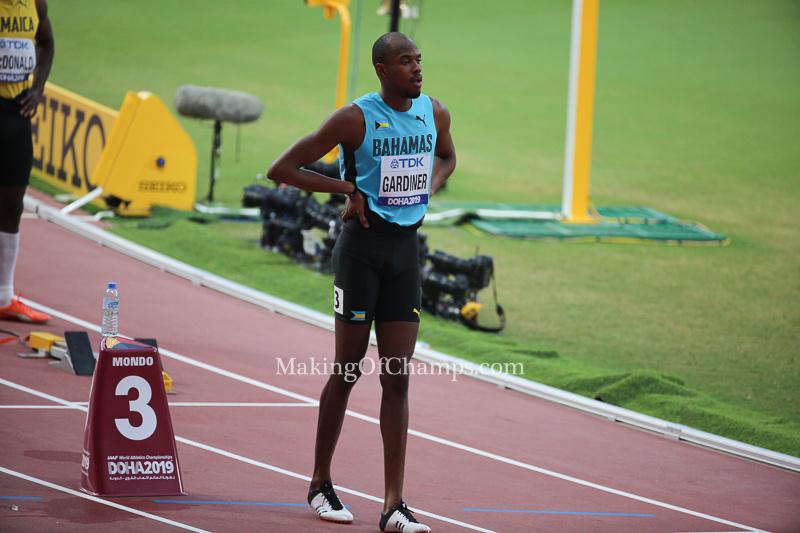World-Class Male Sprinters and High Hurdlers: Uncovering the Similarities in Start and Initial Acceleration Techniques
In the competitive arenas of athletics, split-second decisions and finely tuned techniques can mean the difference between victory and defeat. Recent research published in the journal Frontiers has shed new light on an intriguing commonality between two of the most electrifying disciplines in track and field: sprinting and high hurdling. The study reveals that elite male sprinters and hurdlers share remarkably similar start and initial acceleration techniques, challenging long-held perceptions about the uniqueness of each event’s approach.As coaches and athletes alike ponder the implications of these findings, the research offers a fresh perspective on training regimens and performance enhancement strategies that could reshape the landscape of competitive athletics. With speed and precision as their hallmarks, these athletes may well hold more in common than previously thought, igniting discussions about the foundational skills necessary for success on the track.
Techniques Uncovered: The Common Starting Mechanics of Elite Sprinters and hurdlers
Recent studies have revealed that elite male sprinters and high hurdlers share remarkably similar starting mechanics, dispelling the myth that their techniques are vastly different. Both athletes must engage in a finely-tuned sequence of movements that prioritize explosive power and quick acceleration off the blocks. The common techniques include:
- Optimal Knee Lift: Ensuring that the knees are lifted high during the initial phase aids in maximizing stride length.
- Arm Drive: A vigorous arm swing is crucial for generating momentum and maintaining balance.
- Foot Placement: Sprinters and hurdlers alike focus on precise foot placement to ensure a stable and efficient launch.
- Body Angle: Maintaining an aggressive forward lean contributes to a rapid acceleration.
Analyses of video footage and biomechanical data indicate that both groups prioritize these elements in their start routines. This showcases not just the physical readiness required for sprinting and hurdling, but also a deeper connection in strategy. Performance engineers have noted that the first few meters can substantially determine overall race outcomes, pushing athletes to refine their starting processes. The findings suggest that athletes who can master these techniques may have a competitive edge in both sprinting and hurdling events, creating a fascinating intersection in their training methodologies.
Achieving Optimal Acceleration: Insights from Top Performers in Track and Field
Recent analyses of the start and initial acceleration phases of world-class male sprinters and high hurdlers reveal striking similarities in their techniques that can be crucial for aspiring athletes aiming to enhance their performance. Both disciplines prioritize explosive power and reactive strength to maximize acceleration off the blocks. Top performers from both categories utilize a combination of optimal posture, quick foot movement, and efficient arm mechanics to gain a competitive edge.
Key factors contributing to effective acceleration include:
- Block Setup: Athletes focus on the precise angles of their feet and body to ensure maximum propulsion.
- First Steps: Emphasis on rapid turnover and powerful leg drives during the initial steps.
- Arm Action: Coordinated arm swings that complement leg movements to maintain balance and speed.
A comparison of start times for elite sprinters and hurdlers showcases the importance of acceleration techniques across both sports:
| Sport | Average Start Time (seconds) | Initial Acceleration (m/s²) |
|---|---|---|
| Sprinting | 0.155 | 9.5 |
| High Hurdling | 0.160 | 9.4 |
Such data underscores the fact that executing a strong start and enhancing initial acceleration can set the stage for overall performance in both sprinting and hurdling events. There is a remarkable crossover in techniques, suggesting that athletes can benefit from studying and applying methods used by top performers in both areas to achieve their optimal running capabilities.
Training Recommendations: Bridging the Gap Between sprinting and Hurdling Success
In the pursuit of excellence in both sprinting and hurdling, elite athletes are discovering the meaningful overlap in their training methodologies. To capitalize on this synergy, specific drills and techniques should be adapted to enhance performance for both disciplines. Training regimens must emphasize the progress of explosive power, proper block mechanics, and effective acceleration techniques, which are vital in the initial phases of both sprinting and hurdling. Incorporating methodology to build strength and speed will not only refine athletes’ starts but also improve their overall race efficiency. Additionally, the importance of mental conditioning should not be overlooked; athletes need to maintain focus and build confidence in both sprinting and hurdle events.
The following key exercises can definitely help athletes bridge the training gap between the two sports:
- Block Starts: Focusing on explosive starts from various angles.
- Resistance Sprints: Utilizing sleds or parachutes to enhance acceleration power.
- Hurdle Mobility drills: Engaging in hurdle mobility to improve functional movement and adaptability.
- Over-Speed Training: Training at speeds above normal competitive pace via downhill sprints.
Consider a comprehensive training table that delineates focused areas for each athletic discipline:
| Training Focus | Sprinting | Hurdling |
|---|---|---|
| Start Technique | Low body positioning | Quick foot placement for hurdle clearance |
| Acceleration Phase | Powerful leg drive | Maintain rhythm over hurdles |
| Strength Training | Focus on leg and core strength | Include plyometrics for explosive power |
| Endurance Training | Speed endurance workouts | Hurdle-specific endurance routines |
Insights and Conclusions
the striking parallels between world-class male sprinters and high hurdlers, particularly in their start and initial acceleration techniques, underscore the importance of these foundational elements in elite track performance. As highlighted in the recent study published by Frontiers, these athletes showcase a blend of explosive power, precise coordination, and disciplined training regimens that set the stage for their competitive success. Coaches and aspiring athletes alike can glean vital insights from these findings, emphasizing that mastering the initial moments of a race can make all the difference. As track and field evolves, continued research in this area could pave the way for enhanced training methodologies and improved athlete performance on the world stage. With the next Olympics on the horizon, the spotlight will undoubtedly be on these techniques as athletes strive for gold and glory, marking a new chapter in the legacy of sprinting and hurdling excellence.





